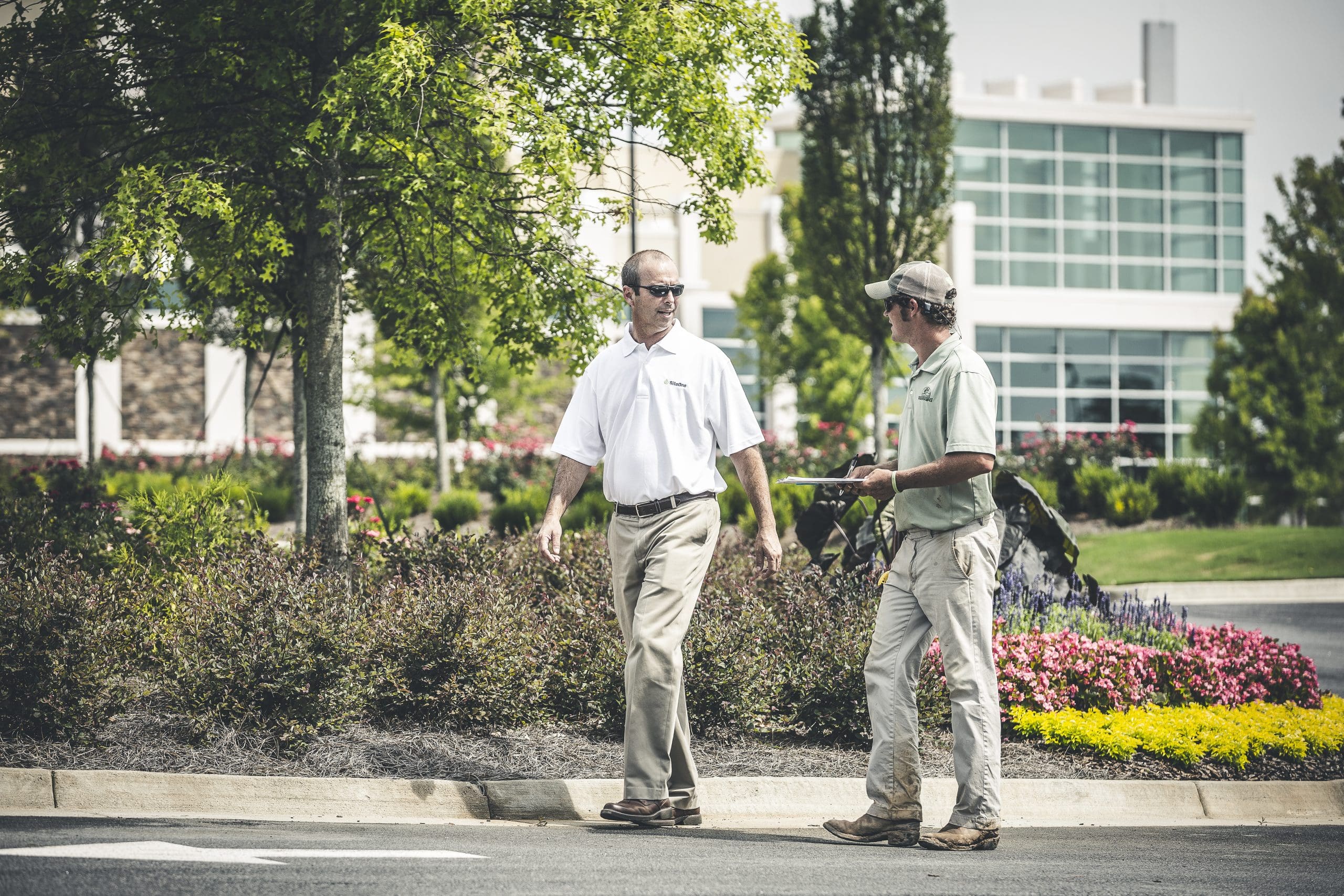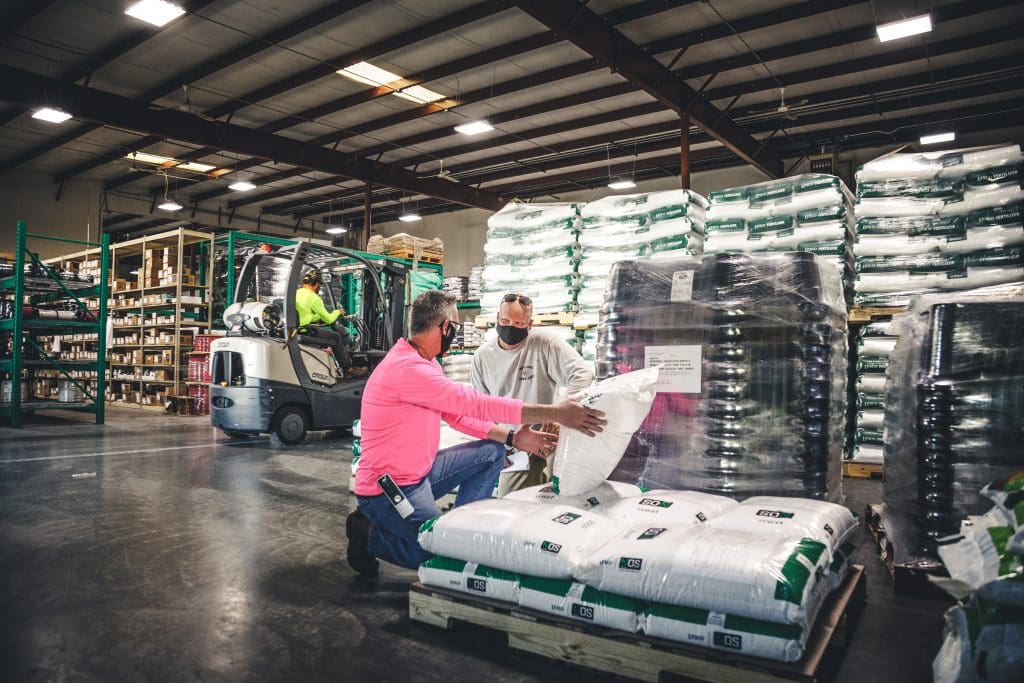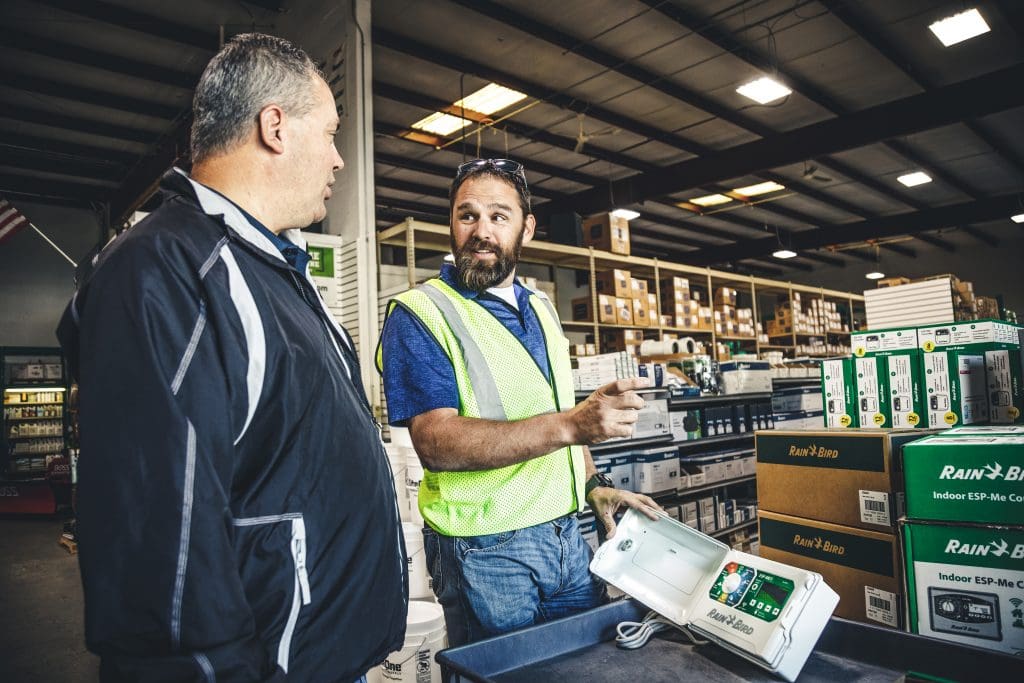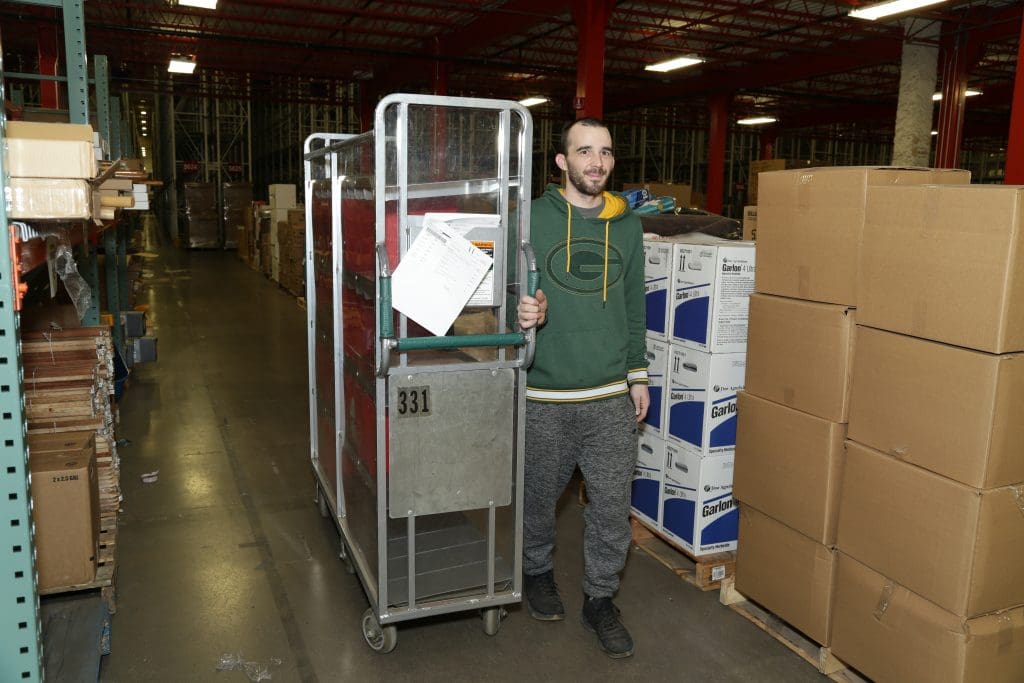
Every industry has been affected by supply chain struggles in one way or another recently and the landscape industry is no exception.
Landscape professionals and landscape supply companies have experienced issues with raw material and plant shortages, delays with receiving trucks and equipment and cost increases across the board.
“Plastic products (pipe, rotors/sprays, fittings), fertilizers, plant material, backflows, low voltage wire, outdoor lighting, electronics, chemicals, engine-powered equipment and hardscapes have all been impacted by a combination of supply issues and cost increases,” says Greg Weller, EVP of Operations for SiteOne Landscape Supply.
What’s Causing It?
The combination of the pandemic, huge consumer demand for outdoor products, labor shortages, and freight and logistics issues have all combined into a perfect storm causing shortages to abound.

“The causes of supply challenges could really be lumped into five buckets – COVID issues, labor shortages, raw material shortages, freight challenges and weather,” Weller says. “Freight and labor shortages are pervasive challenges across almost all product lines. At one point earlier this year there were ~80 tractor trailer loads needing to be moved for every truck/driver available (DAT Freight and Analytics). While that’s improved a bit, freight is still very tight and expensive.”
In the plant material sphere, Lisa Fiore, co-founder and CEO of LandscapeHub, says the Great Recession is also playing a factor on today’s shortages. When it hit in 2008, many nurseries reduced their production.
“They either didn’t have the cash or the appetite to risk the investment of putting more plants in the ground 12 years ago,” Fiore says.
Because trees and evergreens take 10 to 12 years to produce, the effects from the Great Recession are now being seen with those shortages. She says COVID and the increased consumer demand from more people staying home have impacted the availability of faster-produced plant material.
Severe weather events have also impacted the availability of plant material in locations like Texas and Louisiana while increasing demand as people seek to replace the plants they lost in the storms.
Another factor behind the shortages is how most manufacturers adopted the Toyota ‘Just In Time’ style of manufacturing where parts are delivered to factories right as they are needed, cutting down on the need to stockpile them. What started as an idea to stay nimble while cutting costs, became mainstream in manufacturing and this way of operating has resulted in crippling shortages.
“So much of the past 10 to 15 years a lot of manufacturers have tried to run leaner, they’ve tried to be more real-time, just in time inventory because forecasting sales is much easier,” says Matt Schultz, head of product and merchandising for Gemplers. “Since this extreme spike in demand over the last year and a half, those forecasts kind of go out the window.”
The effects of this operating method have been particularly noticeable in the auto industry as landscapers have struggled to get the trucks they need for their fleets due to a shortage of computer chips needed for vehicles. Neil Bales, president and CEO of LandPatterns, based in Dallas, Texas, says they’ve waited six to eight weeks for trucks and he has been told it could be a minimum of four months waiting if he orders his trucks direct from the manufacturer.
Responding to the Shortages
While no one could have predicted the pandemic and its effects on the supply chain, both Gemplers and SiteOne had been stocking up their inventory early on. Schultz says Gemplers has been on a growth trajectory for the last couple of years and they wanted to be able to capture more of that growth.

“We learned about two years ago that just in time inventory wasn’t allowing us to get out to as many and help serve as many customers as we wanted to,” Schultz says.
In response to this, they had started to build up their inventory to get ahead of the demand they could see coming so they were in a better position than some when it came to their supply. Likewise, SiteOne increased their purchases of products in categories they thought might be eventually impacted as the COVID cases climbed in Asia early last year.
“Since then, we have maintained inventory at record-high levels to protect against as many of the supply and transportation challenges as possible,” Weller says.
Fiore says they have been trying to provide as many substitutes and alternatives for their buyers when it comes to plant material and educating them on what is available, so they don’t waste their time searching for one specific plant.
“There are plants that are often specified by a landscape architect that just because it’s not available doesn’t mean there’s not a highly qualified alternative that is available,” Fiore says.
Despite having a better supply than most Gemplers and SiteOne did have to limit purchase quantities occasionally. Schultz says they’re not limiting any purchase quantities right now. Weller says they typically only limited purchase amounts when the manufacturers were having severe issues and demand had spiked to multiples of historic levels. Fiore says some of their suppliers have been utilizing allocation.
“It’s an old school tactic and I hope it becomes extinct, but allocations have been very high,” Fiore says. “They’re trying to keep their customer base happy without selling out of high demand products. They want to keep a little bit for all their customers.”
While suppliers have been working hard to keep prices level, Fiore, Schultz and Weller say they’ve started to see price increases across the board.
“All indications are that we can expect to see continued inflation in the back half of the year in multiple product categories like fertilizers, wire and plastic products (including PVC pipe, poly pipe and fittings),” Weller says.
Adapt and Overcome
Despite everchanging shortages, delivery dates shifting, labor challenges, and a growing backlog of work, landscape professionals are thinking on their feet to find creative solutions to get the job done still.

“We have been communicating with our customers and being their advocate when it comes to planning and ordering,” says Justin Gamester, president of Piscataqua Landscaping & Tree Service based in Eliot, Maine. “We are also very careful not to let them sway towards products that are hard to get so that we don’t run into expansion issues or warranty issues.”
Similarly, Bales says they’ve been communicating with their customers about the delays and they’ve been patient to a certain point. They understand the company can’t help weather and as for material shortages, Bales says they’ll work with the client and sometimes do temporary plantings and will come back and replace them with their desired plants later.
“We have fantastic communication with our clients,” Bales says. “We’ve sent out countless emails and letters stating things. We have told them about tax advantages from freeze damage things like that here in Texas. We’ve tried to be proactive on the front end and when we’re not going to hit a target date we’re open with our clients telling them why and what’s going on.”
With rising costs, landscape companies have started to adjust their prices for their customers. Bales says some costs are being passed on, while they’re absorbing some others. Despite all the challenges he says they’ve grown through this year and are on target to have their best year yet.
Gamester says the price increases have been happening so fast it’s been difficult to keep up with but communicating with customers is huge.
“It could be straight from the manufacturer or as a result of freight/delivery and some items were going up in price that didn’t even make sense,” Gamester says. “We have changed the language in our contracts so that the project price is only valid for 15 days.”
To deal with the truck shortages, Bales says that he’s been paying a premium to get trucks from a dealership for a six to 10 week wait time. He says it still takes quite a bit of searching. He says they’ve also rented trucks and equipment to meet their needs.
“We have a relationship with Fleet Management through Enterprise so we’ve been able to rent some vehicles as needed,” Bales says. “I’ve had to rent equipment through dealerships and distributors like Sunbelt.”
Gamester says the truck shortage has not been a major issue for them.
“I have been able to take advantage of selling some of our vehicles and equipment with the value of used inventory being so high right now,” Gamester says. “Most of my vendors know my cycles and had made sure I was ahead of the curve on ordering. This is where having really strong relationships pays off.”
Predictions for the Near Future
A big question is when or if things will go back to normal. Schultz expects by the late fourth quarter or early next spring the backlog will be better as manufacturers are having to challenge themselves to build more efficiencies and build up capacity. He believes they will hold more inventory moving forward. Gamester believes it will take another six to nine months before things will get sorted out with the supply chain.

Fiore says depending on the plant category some things will balance out sooner than others. Shade trees and evergreens are going to remain in short supply for another year or two. Meanwhile, perennials and shrubs will probably be more available by next spring or next summer. She says the labor shortage is also hampering plant production.
“I know for a fact that nurseries have the ground to expand their operations,” Fiore says. “They have the inputs; they just don’t have the labor to do it.”
Weller agrees that larger plant material will be limited for years to come as it takes time to grow. He says they expect the supplier shortages to level out over the next six months for most product lines while the products’ costs may continue to increase over the next six months through the end of the year.
“Unfortunately, the same trends currently driving inflation like labor shortages, wage increases, and raw material inflation are likely to continue,” Weller says. “Freight costs may subside somewhat after the holiday season but will likely never return to pre-COVID levels due to increased labor and fuel costs.”
Bales predicts the supply chain issues will last at least for a full year.
“It’s been hard on everybody, but the good news is there’s work out there to be had,” Bales says. “It’s just taking a lot of communication with our clients and with our vendors and having good relationships with our vendors.”

